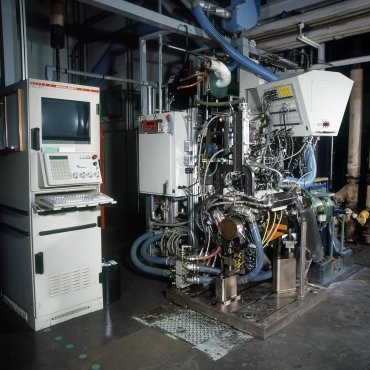
WASHINGTON, D.C. – While meeting here last week to consider a proposed supplemental engine oil category, the American Petroleum Institutes Lubricants Group also discussed how to shore up the engine tests used for the API SN engine oil category in order to avoid its demise.
The Lubricants Group laid out the action items needed to sustain API SN and SN-Resource Conserving, which include:

Photo courtesy of Lubrizol
The Sequence IIIG test is among those being replaced in API SN and in the upcoming API SP.
- Determine when current tests are going to run out;
- Set equivalency for replacement tests;
- Determine replacement test capacity;
- ACC should finish registration on all tests;
- Resolve any hardware issues with replacement tests.
Work has been underway to develop replacement tests for those that are running out of equipment. The Sequence IIIH will replace the IIIG test for oil thickening from oxidation, piston deposits and camshaft wear. The Sequence VH is being readied to take over from VG to measure low-temperature sludge, wear and varnish control, and sequences VIE and VIF will soon be ready to replace the VID (fuel economy). Though still under development, the Sequence IVB, which measures low-temperature valvetrain wear and scuffing, will eventually take over for the IVA.
Arguably, Sequence IIIG, IVA and Sequence VID are of most immediate concern, said an API spokesman in an interview. However, Sequence IIIH is already available, and sequences VIE and VIF are essentially implemented. It is hoped that Sequence IVB will be finalized early in 2018, to take over Sequence IVA.
Also, during last weeks meeting one attendee suggested there may be only about six months of engine parts and equipment left for running the VG. Its replacement, the VH, runs for 216 hours on a Ford 4.6L V8 engine.
Sequence IIIH, which will replace Sequence IIIG, will run for 90 hours on a Chrysler Pentastar 3.6L engine, simulating towing a trailer under high ambient temperature conditions.
To replace Sequence IVA, Sequence IVB is under development. This test will simulate stop-and-go driving conditions on short trips with extended idling. It runs on a Toyota 1.5L DOHC engine for 200 hours.
The Sequence VIE and VIF tests operate for 125 hours on a 2012 GM 3.6L V6 engine to test for fuel consumption for aged oil after 5,000 miles. The VIF version is intended to evaluate extra-low-viscosity engine oils, such as 0W multigrades.
During last weeks meeting, APIs Lubricants Group unanimously voted to move forward with establishing a supplemental passenger car engine oil category to address the catastrophic effects of low-speed pre-ignition. The group, however, was unable to confirm a new supplemental category would be ready by Jan. 1, 2018, which the International Lubricants Standardization and Advisory Committee requested. The supplemental category would act as stop-gap while the market waits for the highly anticipated GF-6 to be approved.
Whether or not API can create a new supplemental category, the SN and SN-RC categories will have to last longer than previously anticipated, because the next generation of engine oils, ILSAC GF-6 and API SP, are not expected to reach the market until 2019 or 2020. Meanwhile, should their supporting foundation of the engine tests crumble, the API SN and SN-RC categories would die out.
Because similar tests will be used for both the intermediary category and eventually ILSAC GF-6, testing equipment availability is a major concern for the Lubricants Group. Intertek and Southwest Research Institute, two independent testing laboratories, did not respond to Lube Reports questions regarding test availability by deadline.
API expects to begin compiling information on test availability in the next week or so, the spokesman said. The information gathered will be discussed during the Lubricant Groups standards meeting in mid-September.